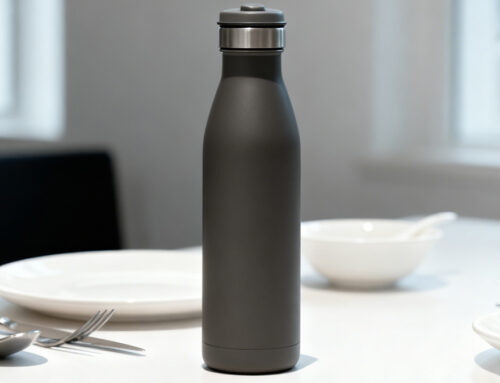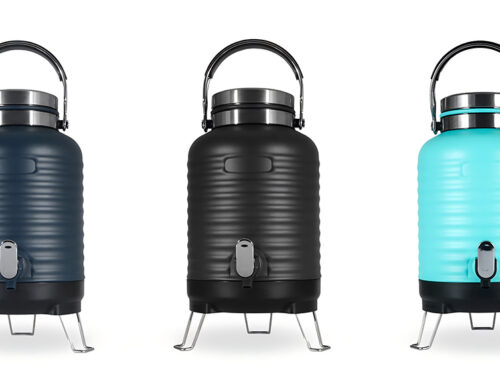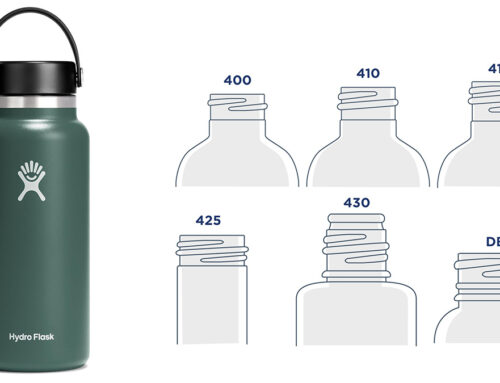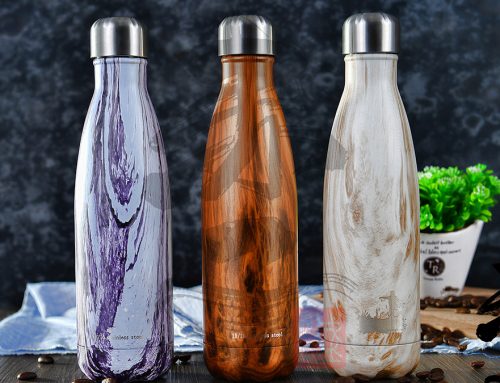Food security has been a hot topic among people for a long time. Besides concentrating on the problems of food itself, we also need to keep a watchful eye on the food container which has already been an inevitable part in people’s daily life. Stainless steel, featuring with good resistance to corrosion and rust, easy and quick cleaning, and durability, is widely used among different fields especially in food container manufacturing. Therefore, whether stainless steel of food grade are used needs our attention cause it has a direct influences on our health! As a leading custom stainless steel food container manufacturer, KingStar compiles this article and hopes it may help you make a better choice for food container made by stainless steel.

Click and read more: Stainless Steel Water Bottle Jug Material Guide
1. What is stainless steel?
As the name implies, stainless steel is a kind metal material which is not easy to get rusted or corroded even exposed in the air or the water.
The stainless steel can be called one of the greatest inventions ever. In the early 19th century, Robert Bunsen found that the chromium has a strong ability to resist corrosion. And in 1821, Pierre Berthier claimed that the iron-chromium alloy was also corrosion resistant. Besides, Pierre observed such alloys’ resistance to some acids, so he advised the cutlery to take iron-chromium as raw materials, which can be regarded as the beginning of stainless steel. Similar discoveries were done for decades by scientists but the stainless steel wasn’t industrialized until 1912, during which the martensitic stainless steel alloy (AISI type 420), was found and industrialized by Harry Brearley in Sheffield, England. Since then, stainless steel has been widely used.
2. What are the families of stainless steel?
After years of research and development, stainless steel has many types. Based on different matrix structure, the stainless steel can be divided into 4 main families as follows.
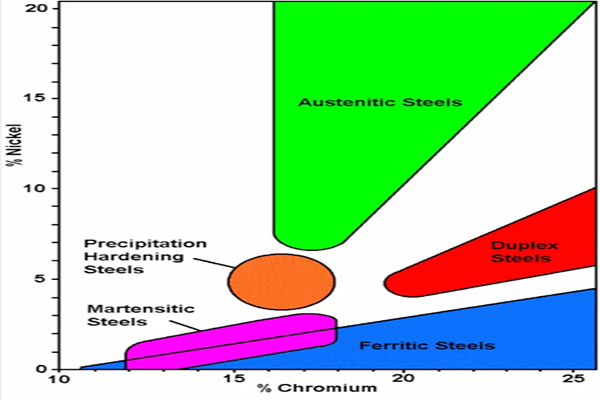
Ferritic stainless steel
Ferritic stainless steel is commonly seen in our lives, with the ferritic structure dominating while using. Ferritic stainless steels are mainly composed of steel and chromium ranging from 11% to 30% and a small amount of other elements like titanium,niobium and molybdenum.In addition to the corrosion resistance of this stainless steel, this stainless steel has good resistance to oxidation and stress, excellent thermal conductivity, and a small expansion coefficient. 400 series stainless steels are made by ferritic stainless steel.

Austenitic stainless steel
This kind of stainless steel has a stable austenitic structure, containing a little elements like titanium, molybdenum and nitrogen as well as 18% chromium or 8% nickel. Stainless steels of 300 series and 200 series belong to Austenitic. The 300 series contain chromium and nickel, while the 200 series containing chromium, nickel and manganese. Austenitic has a good comprehensive performance, which is resistant to the corrosion of diverse media. Furthermore, austenitic features with good toughness, plasticity and easy cutting performance. Currently austenitic stainless steel are commonly used in industries of different fields, like 303, 304, 316 and 317.
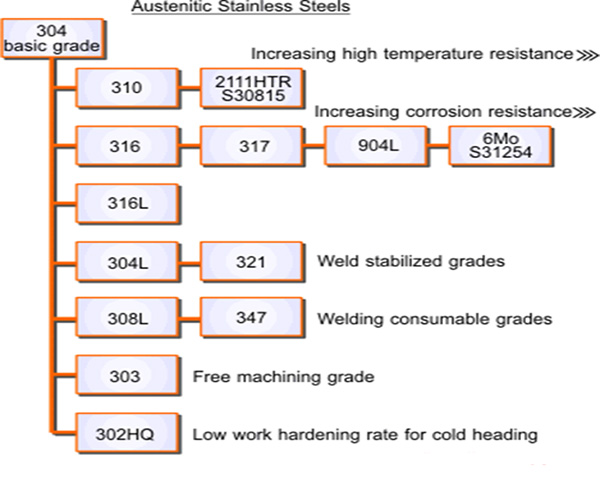
Martensitic stainless steel
It belongs to hardenable stainless steel material and Its main alloying element is also chromium. Compared to ferritic stainless steel, martensitic stainless steel has a higher carbon content, while chromium content is lower, such as 410 and 416 only contain 12% chromium. One of an outstanding characteristics of martensitic is that its mechanical properties vary from different heat treatments. Now such stainless steel material is mainly used for products including surgical instruments and steam turbine blades.
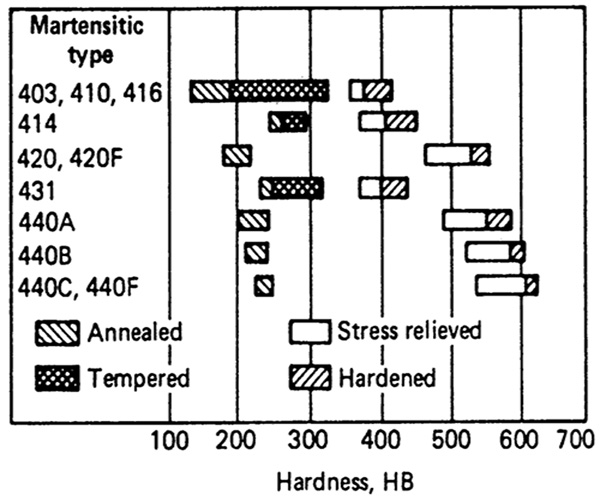
Duplex stainless steel
Duplex stainless steel contains half of the internal ferritic and austenitic structure respectively. It has both characteristics of austenitic and ferritic. But compared with the above two, duplex has better plasticity, higher toughness, better thermal conductivity and smaller expansion coefficient. Types 329 and 2205 are typical duplex alloys. In addition, the corrosion resistance of general duplex stainless steels is equal to or better than 304 and 316, and overall, its pitting resistance is better than 316, because these alloys have a very high chromium content of about 22% to 25% Cr.
3. Why are people willing to choose food containers of stainless steel?

An aluminum pan with a coating loses its glutinosity as time goes by. Copper will have chemical reactions with food. Teflon-type coatings will sputter if the heat is too high. Ceramic and glass pots with poor thermal conductivity are easy to break. But you needn’t worry about the above problems if you use products made by stainless steel, which has five main stand-out features as follows:
Durable: Stainless steel, with higher melting point than aluminium and copper, is also stiffer than the two metal materials. Stainless steel food container is the most long-lasting one among all containers.
Easy to maintain: If your stainless steel food container looks a bit older, vinegar or soda can give it a totally new look without any other special treatments.
No chemical reaction occurs: Compared with pure copper or aluminum, stainless steel, a relatively inert metal , is not easy to have chemical reactions with food.
Low cost but high performance: Stainless steel containers are usually affordable for buyers and they are very durable, which can usually be used for around 10 years.
4. What will be your best choice while selecting wholesale stainless steel food containers?
Now let’s take a look at what kind of stainless steel is used for food-related products. According to NSF international standards, stainless steel used in food equipment must be 200, 300 or 400 series.
200 Stainless Steel
While producing 200 series like 202 and 201, manufacturers usually add manganese instead of nickel. By this way, the stainless steel will be more resistant to corrosion and rust with lower cost. 200 series can also be regarded as food grade, but it is commonly used in tableware with relatively lower quality.
300 Stainless Steel
304
To date, 304 is widely seen when it comes to cookware. Sometimes, the 304 stainless steel is described as 18/8 in the cutlery grading system. As known to many people, the first thing needing considering is the percentage of chromium, then the covering of nickel. 18/8 stainless steel is composed by 18% chromium and 8% nickel.
316
This stainless contains about 16-18% chromium, 10-14% nickel and 2% molybdenum. In the cutlery grading system, it’s also graded as 18/10 stainless steel, made of 10% nickel and 18% chromium. 316 has a great resistance to corrosion and also used in marine fields, thus named marine stainless steel. But 316 isn’t commonly seen in the cookware due to the fact that it’s higher cost. So here come a question whether 316 is much better that 304? The answer is Yes if we stand in the perspective of corrosion resistance. But actually, 304 is enough in our daily cooking if we don’t use it to pack acidic food.
430 Stainless Steel
430 ,a nickel-free and magnetic stainless steel, contains 18% chromium and almost 0~0.75% nickel, thus also named as 18/0. Compared with 316 and 304, it is to tarnish slowly because it doesn’t contain any nickel.
440 Stainless Steel
440 is stainless steel of food grade which is widely used. This kind of steel mainly appears in the kitchen tools like knives, because 430 knives are not only sharp and solid, but also have a good resistance to wearing. However, 440 is hardly seen in tableware or serving utensils, with the characteristics of prone to rust.
Conclusion
The usage of stainless steel vary from its features. No matter you are a manufacturer or an individual, have a clear understanding to food-grade stainless steel is helpful. Safer food containers make our life better.
The stainless food containers of KingStar has high-end performance, quality control and manufacturing standards, as well as stringent budget requirements of our clients. If you want more information, please contact us.
KingStar is an OEM / ODM food container manufacturer factory. We provide one-stop custom manufacturing service from product concept, research and development, tooling fabrication, 3D prototype building, mass production, quality control and globally shipping. Our engineering team will handle all the technical works for you. If you are going to start up a vacuum insulated food container / lunch box / water bottle / insulated coffee cup / flask / jug / tumbler / growler business, we will be your great partner to help you.


